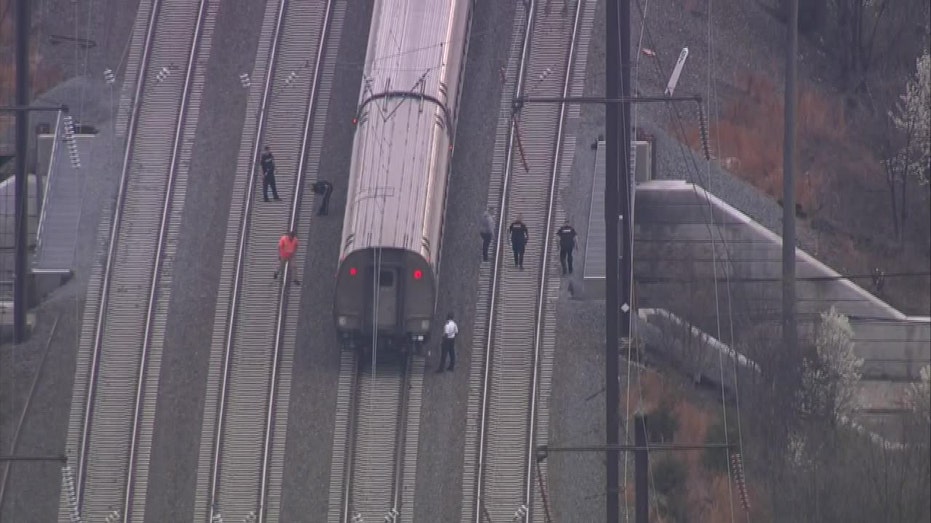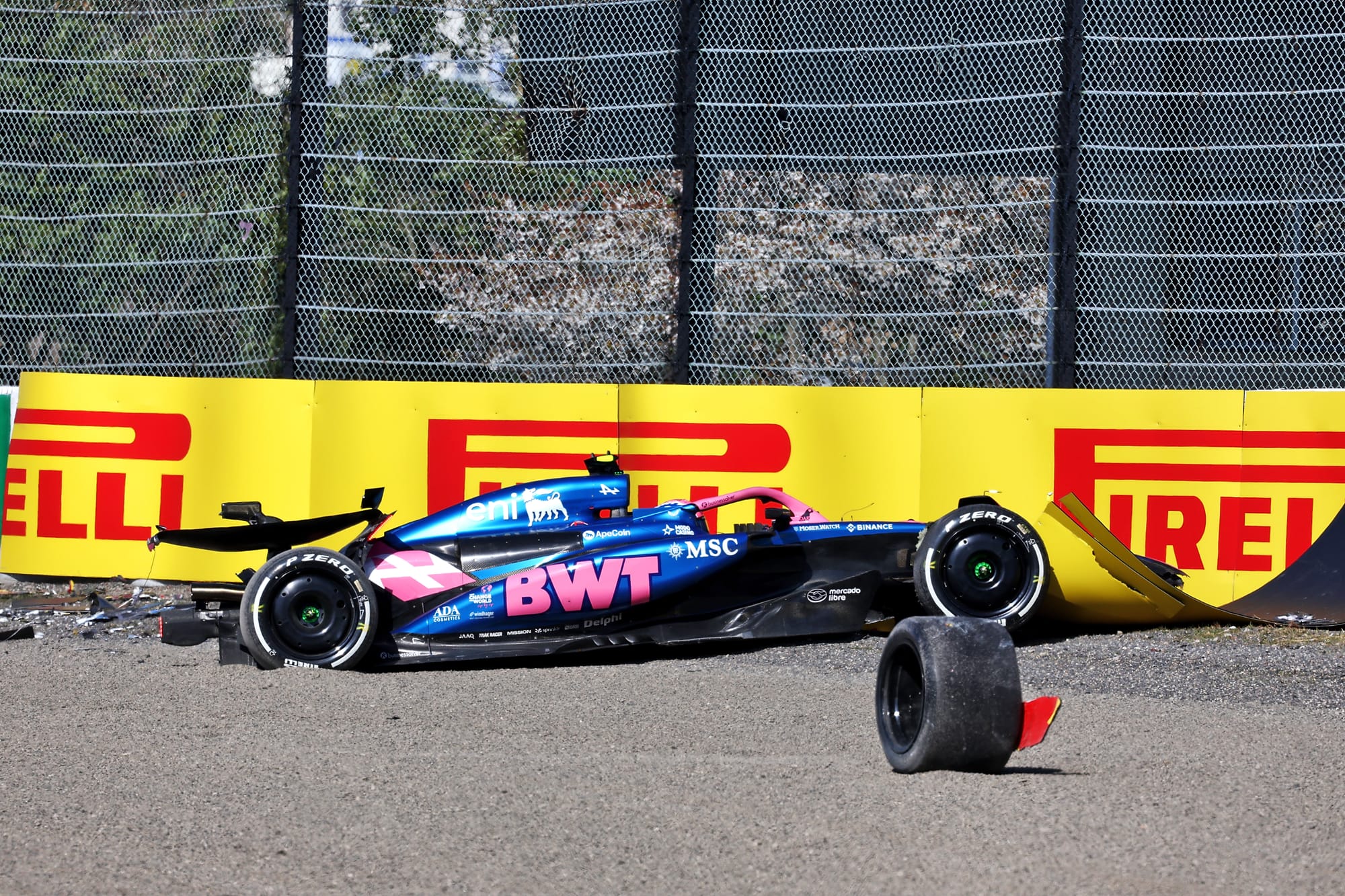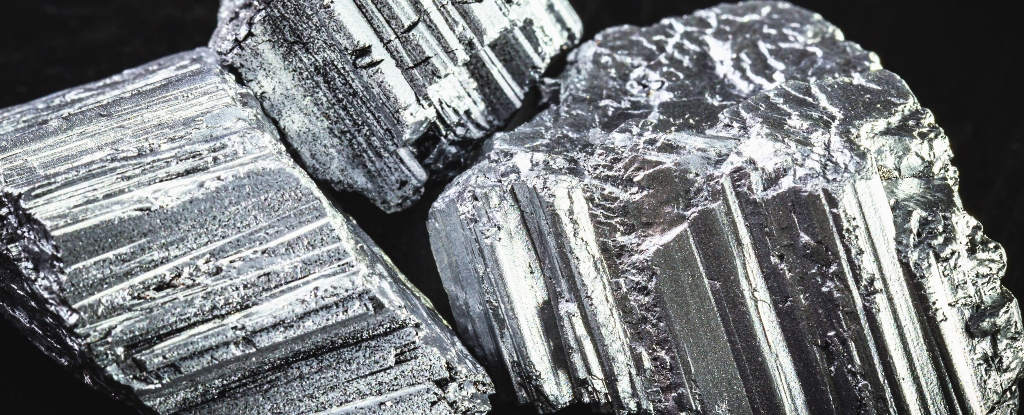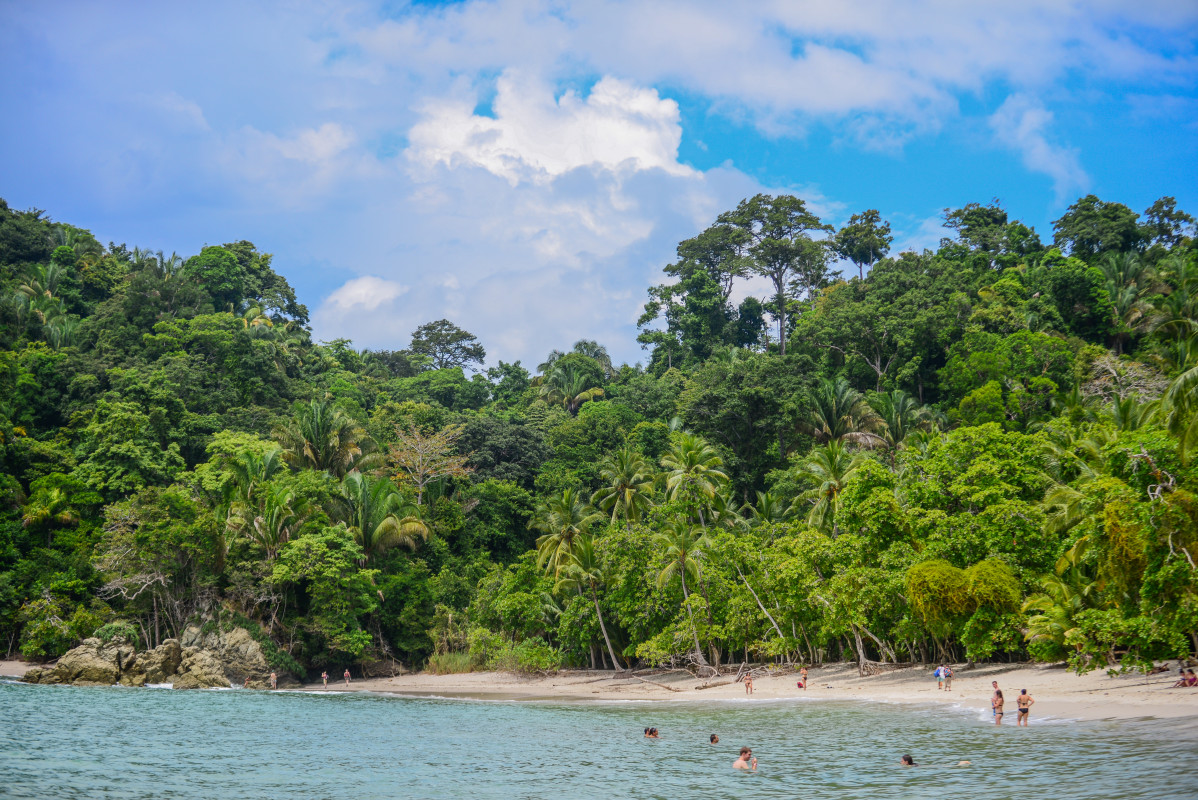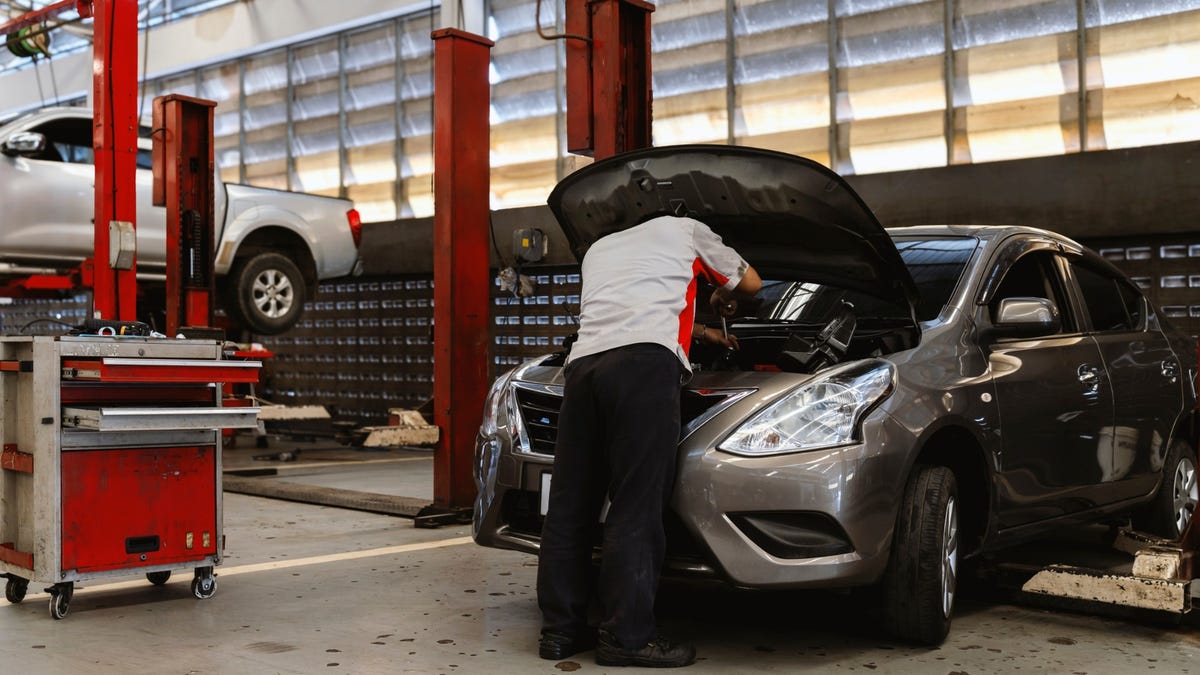Here’s What I Learned Riding All of Ski-Doo’s Snowmobiles
Some of the most beautiful places this country has to offer are only reachable by Ski-Doo, and that’s pretty darn neat. The post Here’s What I Learned Riding All of Ski-Doo’s Snowmobiles appeared first on The Drive.

Unless you live somewhere remote where winter weather makes roads impassable—like, say, the Michigan Upper Peninsula or the Arctic Circle—snowmobiles are toys for the privileged few to enjoy on their fancy winter vacations. This was more-or-less my stance before I made the odd decision to accept Ski-Doo’s invitation to ride their entire 2026 lineup in Montana last month.
Why odd? Well, we are The Drive, not The Ride. And while we do cover motorcycles from time to time, at least those have wheels. Snowmobiles don’t even have those! Regardless, it seemed like a great opportunity to expose myself to a world I knew little about. Prior to that, I had only ridden a snowmobile at a pace equivalent to taking out a golf cart around a gated community. Cool, but not exactly exciting—and the machinery was equally as memorable. Y’know, some beat-up, rental-grade stuff.
Not this time, kemosabe. I didn’t know it at the time, but I had signed myself up for two days of intensive riding in some pretty interesting terrain. I’m talking eight-plus hours a day, sometimes on frozen roads, sometimes on dedicated trails, steep hills, dense woods, and sometimes on seven feet of snow capable of swallowing me whole.

The goal? To experience the Ski-Doo magic. To understand what makes a particular snowmobile the perfect fit for a beginner rider over a veteran. What makes a machine better for an avid outdoorsman who wants to go into the wild for days with loads of gear, compared to someone who just wants to carve trails and fly off jumps? To put it in car terms, Ski-Doo offers over a dozen models that range from an electric Nissan Leaf, a fuel-sipping, good-at-everything Honda Accord, to a big-and-plush Cadillac Escalade. And then there are the ones that made me wish I’d been more gifted in the courage department: the Porsche GT3 RSs of the snowmobile world—only scarier.
Day 1
After getting sized up for some sweet snow gear that made me look like a character from Halo, I was introduced to what some referred to as the “Honda Accord” of snowmobiles: The Ski-Doo Grand Touring Sport ($11,349). Room for two, heated grips, heated throttle, tall windshield, side mirrors, a wide front track for extra stability, and a comfortable suspension. With a liquid-cooled, Rotax 900 four-stroke engine under the hood—uh, seat(?)—the Grand Touring Sport was no slouch, but it wasn’t intimidatingly fast either.
Even more exciting than the ride itself was the venue where I’d experience this particular machine: Yellowstone National Park. Closed to the public during winter, the only way to gain access to the park is by snowmobile (or tracked vehicle with a special permit) and with a park-certified guide. This is due to two reasons; an abundance of caution due to the harsh terrain and weather, and the fact that roads aren’t maintained in the winter season.
An important detail of this story is that Ski-Doo is the only snowmobile brand allowed inside the park during winter due to strict emission and noise restrictions—and even then, not every Ski-Doo fits that bill. The Grand Touring Sport’s four-stroke engine meets the criteria, so off we went.




The debrief was short, as the GTS is simple to operate. There’s a push-button electric start, and the throttle lever is operated with the right thumb. There’s a brake lever on the left grip and a small digital display for vital information like engine temperature, speed, fuel level, heat levels (for grips and throttle lever), and “drive” mode selection—yes, snowmobiles have different modes too, and they work just like they do in a car. This particular GTS packed 90 horsepower and weighed 536 pounds, giving it a power-to-weight ratio better than that of a BMW M3 Competition.
It wasn’t long until I threw my leg over the saddle and set off for the park’s entrance. The snow on the road we were following was pretty compacted, so it was easy to follow the tracks left by the machines in front of me for the majority of the time. I was quickly reminded how “nervous” a snowmobile feels at first, given that the handlebars steer nothing but skis. As a result, steering can often feel like more of a suggestion and less of an actual command. To turn on a dime, the rider must hang their body off to the side, sidecar racer-style. Yeah, good luck getting my XXL frame to do that.
Despite a full day of riding ahead, this would be the only machine I would experience that day. The plan was to acclimatize the body not just to the weather (a fairly comfortable high 30s), the altitude (about 7,000 feet), the bulky gear, and of course, the dynamics of a snowmobile.



I slowly built up my confidence and comfort at the helm of the GTS, and we were eventually doing between 40 and 50 mph for miles on end. The heated grips and throttle are more of a necessity and less of a luxury, though some higher-end models also offer heated seats among other, even fancier options. The scenery ranged from stunning at worst to jaw-dropping at best, all made even better by the fact that, on that given day, there were probably no more than a couple of hundred people in a park that reaches into three U.S. states. People who had visited before shared with me that Yellowstone roads can be a parking lot during peak season, with main attractions like Old Faithful completely swarmed by thousands of tourists. There was none of that in late February.
By this point, I felt way more agile on the back of the GTS. Little by little, I started leaning my body more into turns to help it steer better. I was even getting braver with the throttle and giving it more gas coming out of corners, causing the front outside ski to lift off the ground. I didn’t like that, so I stopped doing it. Much like steering, braking isn’t what you’d expect from a car, motorcycle, or side-by-side. In a snowmobile, letting off the throttle causes enough drag in the track below to slow you down gently without necessarily activating the brakes. However, if you need to slow down quicker, the Brembos inside the track have got you covered. Pull the lever hard enough and you can lock the track in the same way you’d lock the rear tire on a bicycle, making for a fun little skid. This isn’t as fun when you’re going fast and suddenly need to stop on a dime, because, well, you can’t exactly stop on a dime.
In typical Yellowstone fashion, we were coming around a bend when suddenly, we noticed a bison herd chilling in the middle of the trail. They weren’t passing by, they were just standing there, motionless. After taking in the incredible sight for a few minutes, we thought our commotion would make them want to move. Nope. To one side was a lake and to the other a steep hill covered in trees, so there was no way for us to go around them.


That’s when our trusty park guide decided to do something that frankly made me uncomfortable at first: Push our way through. I’ve seen videos of people getting too close to these beasts getting punted 10 feet in the air. At least I was wearing a helmet, I guess.
Trusting our guide’s experience, we formed a line with him leading the way. We rode very slowly and purposefully, making a path through the herd. In the thick of it, I could see their eyes looking straight at me, no more than eight feet away. It was unnerving, but we all made it through unscathed—bison and human.
My time with the GTS had come to an end. It was a bummer, as I had really enjoyed getting to know such a cool machine. It seemed like the perfect all-around snowmobile for having fun, doing chores around the ranch, or just exploring trails. I could see how its versatility was ideal for riders with a wide range of experience. And how, with proper training, even my 13-year-old daughter could operate one.
But boy, I wasn’t prepared for what Day 2 had in store.

Day 2 — It Has How Much Power?
Imagine you’ve just learned how to drive in a humble Honda Accord and finally mastered everything about it. You feel like you’re ready for more—then, surprise!
I started the next day in a much different beast: The 2026 Expedition SE 900 Ace Turbo R ($15,799). Think of it as a Cadillac Escalade-V for the snow. It’s huge, it’s heavy, it’s very powerful, and it’s got a fancy display and a big trunk. As tested, it put out 180 hp from its four-stroke, liquid-cooled Rotax engine. It’s not the most powerful unit Ski-Doo makes, but at 700 pounds, it is the heaviest. Still, it shares the same power-to-weight ratio as a Ferrari F12tdf.
Just firing up the Expedition provides you with a more elevated experience than the GTS. The 7.8-inch digital gauge cluster was super sharp and legible even in bright surroundings, there were buttons on the handlebars to operate various functions, and it had GPS, a stereo, driving modes, LED headlights, rear air suspension, adjustable front suspension, and perhaps the feature that I found coolest of all: a 1,200-pound towing capacity. I could take my Newfie camping!



We set off on a trail system around West Yellowstone toward Two Top Mountain. Right away, I felt the enormous power difference. Also, the Expedition required a lot more effort to turn. I had gotten used to whipping the Accord around, and now I had to learn how to drive a shipping container on tighter trails lined with trees. Another thing that stood out was the rear air shock, which made things very comfortable.
I must admit that I thought I would love the Expedition, but I quickly found it a bit overwhelming for the type of trail we were riding. It was a lot of machine to guide around the bends, and I grew tired of managing its weight. Perhaps with more experience under my belt, I would’ve fared better, but by the time we reached the top of the mountain nearly two hours later, I was wiped out. Luckily, it was time to swap.
The next snowmobile on the docket was the MXZ Adrenaline ($13,349) with a two-stroke, Rotax 850-cc engine. It produces the same 180 hp as the Expedition but weighs over 200 pounds less. In the Ski-Doo lineup, this is like the Porsche 911 of the family. In terms of power-to-weight, though, it’s way, way beyond one of those.
I hopped on unsure what to expect, and the Ski-Doo spokesperson kindly told me to hang tight. “Yeah, don’t they know what I do for a living?” I thought. I fired her up and once I figured there was enough space, I cranked the throttle and gave it the Elk Chili. Holy shit. I was almost thrown off the saddle. The force with which the power was sent to the track below and applied to the snow underneath was violent. “Why would anyone need so much power in one of these stupid things,” I said to myself.




Of course, after 30 minutes of riding the MXZ Adrenaline, I had surprisingly not grown any braver, so I was still hugely intimidated by it. Eventually, I did have fun given that we were out of the woods (quite literally), and if I made a mistake, I would fall off and hit the snow instead of a tree. The suspension was stiffer but not exactly harsher. The steering was more responsive in the softer powder but roughly the same as the others in the more compacted snow. Throttle response was night and day compared to what I had ridden so far, and perhaps more surprising was how torquey the two-stroke engine was.
By this time, we had been riding for over three hours and had climbed to nearly 9,000 feet above sea level. We were all feeling the effects of wheeling through trails all morning and several of us (not me—yet) had a few tumbles. With the Expedition feeling a bit too big and the MXZ a bit too fast, I was determined to find something between those two.
“If Everything Seems Under Control, You’re Not Going Fast Enough”
Cue in the MXZ X RS ($16,399). Technically the same platform as the previous machine but with different guts, features, and suspension. Two of these were available to test, one with the 850-cc engine and the same staggering 180 hp and the one I ultimately chose to ride down the mountain, with a 600-cc engine making 125 hp. The biggest difference was the Competition Package, which meant super-advanced semi-active suspension.



The 125 ponies felt way more manageable than the machine before, and the 486-pound curb weight felt just right. Not too fast, not too heavy—I had finally found the sweet spot.
The MXZ X RS was loads of fun heading back into town, especially since, by this time, I was much more comfortable in the saddle. I could take turns at higher speeds without fearing for my life (only kinda lying there) and I even started kicking the rear out with a bit of throttle or by locking the brakes going into a corner. It was like driving an off-road buggy but without the safety of a roll cage. Power delivery was incredibly smooth and not like a bucking bull trying to throw me off.
On the way back to base camp I built up some courage, closed my eyes (not literally), and held the throttle wide open for more than two seconds. I quickly glanced down at the speedo and saw 77 mph. I felt like I had been shot out of a cannon. The feeling was unreal. Mario Andretti once said that if everything feels under control you’re not going fast enough, and I certainly felt like nothing was under control, so I took that as my cue to stop pushing.
I have kids, and they expected me to come home the next day.
After a brief lunch that involved a light half-pound bison burger and a couple of Cokes, it was time to experience the ultimate Ski-Doo. I thought about sharing its power-to-weight ratio, but I think you get it by now. These things are just wicked.



The Freeride ($17,549) is exactly what it sounds like: a free ride to hell or heaven, depending on your beliefs and life choices. It’s a narrow-track, deep snow machine with a tiny, tiny saddle and a powerful, powerful engine. A two-stroke Rotax with that same 180 hp can blast you into the sky because it only weighs a little over 400 pounds. This is the lightest machine I rode during the entire trip and also the most powerful. Also, the scariest.
Accelerate and the Freeride lurches forward like a cheetah, ready to tame whatever big jumps are ahead of you. In my case, it was just a 90-degree turn, not a jump, but I didn’t “turn enough” to make it, so I just went straight into a snow mound. I had to hop off to tug the thing out and regain my composure. We continued into the mountains, where the snow was so deep you could only see the top half of the trees sticking out from the ground.
I had my first tumble while trying to turn around on a steep slope like a dummy. I went feet-first into the snow. I heard the Freeride roll over me but I was too deep in my snow grave. Eventually, I learned how to place both feet on the same side of the machine and hang off it while turning on inclined terrain to keep the thing from rolling. It was super scary at first, but I felt like He-Man when I got it right.
Much like how a Ferrari 499P Modificata wouldn’t be my first choice of a daily or even a Sunday-only car, the Freeride wasn’t for me, but I just felt lucky to experience the pinnacle of high-performance snowmobiles. Knowing that people still modify them to be even wilder is just beyond my comprehension.

One for Everyone
I went into this experience not knowing much about snowmobiles, thinking they were fancy toys for the upper crust, and walked away realizing that they’re no different than cars, motorcycles, or many other alternative methods of transportation. In some parts of the world, people rely on them to take their kids to school, ride to work, and gather supplies to live their daily lives. They gotta be strong, reliable, practical, and do much more than just look sweet and go fast. They’re even used by utility companies to service remote power lines or cell towers, and I think that’s cool. In many cases, snowmobiles are used by conservation officers and park rangers to protect our wild flora and fauna (though nowadays it’s those agents who need protection—but that’s a different story).
More commonly, though, they’re used by people like you and me: Outdoor enthusiasts, tourists, and of course, adrenaline junkies. From $5,000 to $18,000, from 40 hp to 200, there’s a snowmobile out there for everyone.
Email the author at jerry@thedrive.com
The post Here’s What I Learned Riding All of Ski-Doo’s Snowmobiles appeared first on The Drive.
